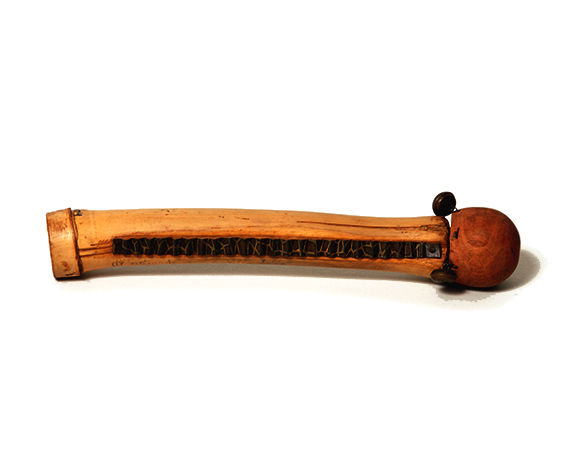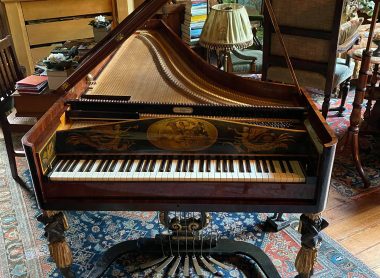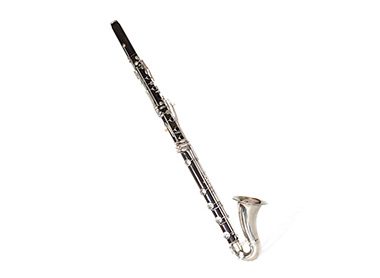

The reco-reco is an idiophone with timbral intonation not aligned with the tonal process, with a sound of indeterminate pitch. Its shape is usually cylindrical. It can be made from one or more sections of bamboo (“taboca” or bamboo), wood, metal, bovine horn or calabash (like its Cuban counterpart, the guiro). Along its entire length, transverse grooves are opened, creating a toothed band that is rubbed with a specific stick to generate the sound.
In this example, the instrument’s body is made of bamboo in which a groove is dug into which a serrated metal plate with geometric shapes is fitted. In the upper part of the instrument, made of wood, two metal rattles are attached that add a differentiated sound to this reco-reco.
The instrument integrates Brazilian rhythm and is part of our folklore and the music of several indigenous peoples. Villa-Lobos made extensive use of reco-reco in his works.
Reco-reco is the generic term for the scraped idiophone. It refers to any type of material whose surface – or part of it – is made up of a series of transversal and parallel grooves very close together, along the length of the piece, to be rubbed with a specific type of drumstick.
PEDRO SÁ, 2014.
MIMO, 2011.








